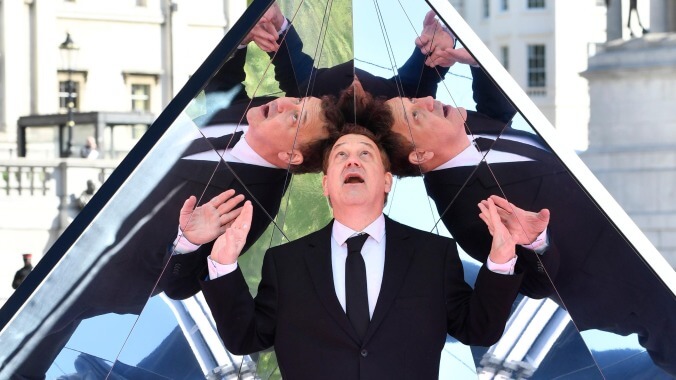Sam Raimi says he didn't have Doctor Strange 2's ending until more than halfway through filming
In a Rolling Stone interview, Raimi also discusses the pressures of making a movie that's essentially a sequel to three different recent Marvel projects at once

Prior to signing on to take over Doctor Strange In The Multiverse Of Madness, Sam Raimi hadn’t made a movie in 9 years—and hadn’t put his hand to a superhero film, the genre he helped establish as the modern blockbuster, in 15. It is, thus, fairly enlightening to hear Raimi talk frankly about the industry, and the challenges of settling in to the Marvel machine, which he did in a new in-depth interview today with Rolling Stone’s Brian Hiatt.
Raimi is unsurprisingly charming and humble throughout, but from a Marvel watcher’s point of view, the most interesting material in the profile probably comes early on—when the Evil Dead director confirms that, yes, his tenure on Multiverse (which began shortly after original Doctor Strange director Scott Derrickson left the film over reported “creative differences” with Marvel) really was the desperate game of catch-up that it seemed like it might be, with screenwriter Michael Waldron racing to finish the movie’s script just days ahead of Raimi’s shooting schedule.
“I think the hardest part was the time deadlines,” Raimi says while talking up the challenges on the film. “Not having the story or the script [ready] … being halfway into it and not knowing what the ending was. Michael’s trying to stay a couple days ahead of us with the next page coming out of his computer printer, and it’s hard because you want to make sure that everything is supporting the whole—that the themes are running through the picture. But when you don’t quite know everything about the picture, it’s hard to do that job as effectively as possible.”
(Among other things, Raimi notes that the film’s tight timetable meant he was sometimes forced to settle for less ambitious shots than he might normally have gone with. “What I should be doing with every shot and every moment, thinking ‘What’s the best technique?’ Not simply ‘We’ve got to make the schedule, put it on a crane. I know it can work from there. It may not be the absolute best choice, but we’ve got to keep momentum going for this unit, because I’ve got to get off this stage by five o’clock today, and they’re going to tear it down.’”)
To be clear, Raimi is effusive with praise for Waldron, and Derrickson, and Benedict Cumberbatch, and Elizabeth Olsen, and Benedict Wong, and Kevin Fiege, and everyone involved in the making of the film. But it does sound like making a big-budget superhero movie that was behind schedule the moment he arrived on set that and which is also, as Hiatt notes, functionally a sequel to three different things at once, might have been a tad stressful.
Here’s Raimi talking about creative freedom, MCU style:
Marvel allowed me complete creative freedom. However, it had to follow so many things in Marvel lore, [so] even though I had complete freedom, the previous movies and where Marvel wants to go in the future really directed the path in an incredibly specific way. Within those parameters I have freedom, but I’ve got to tell the story of those characters in a way that ties in with all of the properties simultaneously. We had to make sure, for instance, that Doctor Strange didn’t know more than he had learned about the multiverse from No Way Home. And yet we had to make sure he wasn’t ignorant of things that he had already learned. So everything was dictated by what had become before.
All of which was compounded, as Hiatt notes, by the fact that both Spider-Man: No Way Home and WandaVision were originally slated to arrive after Multiverse Of Madness, thus necessitating even more hoop-jumping to keep track of who knows what about what when. In fact, re: WandaVision, Raimi notes that the show wasn’t even on his radar until “halfway, or maybe three-quarters of the way into our writing process, I’d first heard of this show they were doing and that we would have to follow it…I never even saw all of WandaVision; I’ve just seen key moments of some episodes that I was told directly impact our storyline.” So, yeah, it sounds like Chaos Magic was happening behind the scenes, too. (Raimi also credits Olsen with helping him to understand Wanda Maximoff as a character, noting that he happily deferred to her understanding of Wanda for the film.)
All of which is just a small part of a much longer interview, in which Raimi addresses his long-time relationship with the Coen brothers, the time he and Stan Lee went around Hollywood pitching a Thor movie, and whether he’d ever make a Spider-Man 4. (“‘Does Tobey want to do it? Is there an emotional arc for him? Is there a great conflict for this character? And is there a worthy villain that fits into the theme of the piece?’” There’s a lot of questions that would have to be answered. If those could be answered, then I’d love to.”)